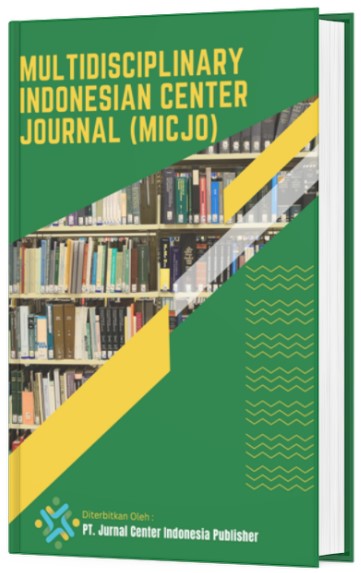THE EFFECT OF HEDONIC SHOPPING MOTIVATION, SHOPPING LIFESTYLE AND FEAR OF MISSING OUT ON IMPULSIVE BUYING WITH POSITIVE EMOTION AS A MEDIATION IN GENERATION Z (SHOPEE E-COMMERCE USER CASE STUDY)
DOI:
https://doi.org/10.62567/micjo.v2i3.991Keywords:
Digital Marketing, MarketingAbstract
Shopee, as one of the e-commerce establishments established in 2015 and part of the Sea Group in Southeast Asia, has succeeded in creating a safe, user-friendly and fast online shopping platform. With strong operations in seven markets in Southeast Asia, Shopee not only provides a platform for buyers to find products, but also provides training and support to their sellers. The rapid growth of e-commerce in Indonesia is also influenced by factors such as the increase in population, increasing smartphone and internet users, and the development of financial technology companies. The convenience of online shopping encourages consumers to buy various desired products so that they are encouraged to behave consumptively. This then stimulates the phenomenon of impulse buying in consumers. Currently, economic activities are dominated by Generation Z's behavior to carry out activities such as scrolling, online shopping, and making transactions. Some marketplaces have not paid attention to the positive emotions of consumers with the Generation Z group in the target market, hedonic shopping motivation, fear of missing out, and shopping lifestyle that can trigger impulsive purchases which are part of the consideration of the preparation and strategy of innovative marketing targets according to the needs of market psychology. This study aims to find out how much respondents assess hedonic shopping motivation, fear of missing out, and shopping lifestyle, find out the influence of hedonic shopping motivation, fear of missing out, and shopping lifestyle on impulse buying generation Z, find out the influence of positive emotions on impulse buying generation Z, to know the influence of hedonic shopping motivation, fear of missing out and shopping lifestyle on impulse buying through positive emotions. This study uses a quantitative method. The sampling technique uses purposive sampling. The data obtained was 385 respondents by distributing questionnaires online. The respondents in this study are Generation Z Shopee users in Indonesia. Data analysis was conducted using Structural Equation Modeling-Partial Least Squares (SEM-PLS) which was then processed with SMARTPLS. The results of this study are hedonic shopping motivation, fear of missing out, shopping lifestyle, positive emotion have a significant positive effect on impulse buying.
Downloads
References
Ahmadova, S., & Nabiyeva, S. (2023). The impact of hedonic shopping motivation on impulse buying behavior: Evidence from online consumers. Journal of Consumer Marketing Research, 8(1), 55–67.
Andika, M., Maisithoh, S., Kholiq, Y., Nisa, D., & Rohmah, N. (2021). Efektivitas Marketplace Shopee sebagai Marketplace Belanja Online yang Paling Disukai Mahasiswa. Jurnal of Education and Technology, 1, 25.
Awais, M., Samin, T., & Shahzad, H. (2022). Exploring the impact of online shopping behavior on consumer purchase intention: Evidence from e-commerce platforms. International Journal of E-Business Research, 18(3), 45–60.
Cahyani, A. D., & Marcelino, R. (2023). Pengaruh kemudahan penggunaan dan kepercayaan terhadap keputusan pembelian konsumen pada e-commerce. Jurnal Ilmu Manajemen Terapan, 7(2), 112–121
Cobb J.C. & Hoyer W.D., 1986, Planned versus impulse purchase behaviour. Journal of Retailing, 62(4), pp. 384-409
Diksita, K. I. A., & Jatra, I. M. (2018). Peran Emosi Positif Memediasi Pengaruh Fashion Involvement Dan Hedonic Consumption Tendency Terhadap Impulse Buying Fakultas Ekonomi dan Bisnis Universitas Udayana, Bali, Indonesia Abstrak Perkembangan jaman yang semakin modern saat ini ditandai dengan. E-Jurnal Manajemen Unud, 7(6), 3258– 3290.
Google, Temasek, & Bain & Company. (2022). e-Conomy SEA 2022: Through the waves, towards a sea of opportunity. https://economysea.withgoogle.com/
Hair, J. F., Hult, G. T., Ringle, C. M., & Sarstedt, M. (2022). A Primer on Partial Least Squares Structural Equation Modeling (PLS-SEM) (3rd ed.). SAGE Publications Ltd.
Hamdani, N., Muharwiyah, M., & Nurhasan, R. (2022). Pengaruh Price Discount dan Shopping Lifestyle Terhadap Impulse Buying Pada Konsumen Shopee di Kabupaten Garut. Business Innovation and Entrepreneurship Journal, 4(1).
Hardani., Andriani, H., Ustiawaty, J., Utami, E. F., Istiqomah, R. R., Fardani, R. A., Sukmana, D. J., & Auliya, N. H. (2020). Metode Penelitian: Kualitatif & Kuantitatif. Yogyakarta: Pustaka Ilmu Group Yogyakarta.
Indrawati, Putri Yones, P. C., & Muthaiyah, S. (2022). eWOM via the TikTok application and its influence on the purchase intention of somethinc products. Asia Pacific Management Revirew.
Kholis, N., & Saifuddin, M. (2023). The role of positive emotional response in the relationship between store atmosphere, sales promotion, hedonic shopping motivation, and impulsive buying in Indonesia’s largest department store. Kasetsart Journal of Social Sciences, 44, 823–832.
McKinsey & Company. (2022). The rise of Gen Z in Southeast Asia: Digital, discerning, and demanding.
Nurlinda, R. A., & CHristina, D. (2020). Peran Positive Emotion Sebagai Mediator Hedonic Shopping dan SHopping Lifestyle terhadap Impulse Buying di Lazada. Jurnal Riset Manajemen dan Bisnis, 5(1), 231–244.
Park, E. J., Kim, E. Y., Funches, V. M., & Foxx, W. (2012). Apparel product attributes, web browsing, and e-impulse buying on shopping websites. Journal of Business Research, 65, 1583–1589.
Peranginangin, J., & Romadlon, T. W. (2023). Pengaruh Hedonic Shopping Motivation, Quality of Website, dan Discount terhadap Perilaku E-Impulse Buying dengan Positive Emotion sebagai Variabel Mediasi (Studi Kasus pada Konsumen Shopee). Journal of Management and Social Sciences, 2(1), 142–160
Peter, Paul, J., & Olson, J. C. (2014). Consumer Behavior and Marketing Strategy 6th Edition. New York: Mc Graw Hill.
Sekaran, U., & Bougie, R. (2016). Research Methods for Business: A Skill Building Approach. Wiley & Sons.
Siskawati, D., & Dirgahayani, P. (2024). Gamification: Strategy to Pull the Intention of DKI Jakarta Residents (Choice User) to Use Public Transportation. Jurnal Ilmiah Ilmu-Ilmu Teknik.
Sugiyono. (2017). Metode Penelitian Kuantitaif, Kualitatif dan R&D. Alfabeta.
Sugiyono. (2022). Metode Penelitian Manajemen. Alfabeta.
Tirtayasa, S., Nevianda, M., & Syahrial, H. (2020). The effect of hedonic shopping motivation, shopping lifestyle and fashion involvement with impulse buying. International Journal of Business Economics (IJBE), 2(1), 18-28.
Turban, E., King, D., Lee, J., Liang, T. P., & Turban, D. C. (2012). Electronic commerce 2012: A managerial and social networks perspective (7th ed.). Pearson Education.
Wulan, W. N. N., Suharyati, S., & Rosali, R. (2019). Analisis Pembelian Tidak Terencana pada Toko Online Shopee. Ekonomi dan Bisnis, 6(1), 54–71. https://doi.org/10.35590/jeb.v6i1.830
Vinna, S. Y. (2015). Perilaku Konsumen. CV Pustaka Setia
Downloads
Published
How to Cite
Issue
Section
License
Copyright (c) 2025 Reni Pratiwi Sihombing, Rd. Nurafni Rubiyanti , Mahir Pradana

This work is licensed under a Creative Commons Attribution-ShareAlike 4.0 International License.


















